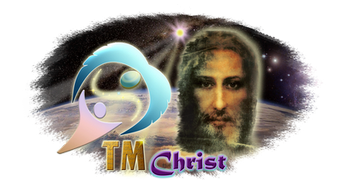Families are the foundation of all societies and civilizations. As the family goes, so goes society. Yet, we also know that as society goes, so goes the family.
The problem of dysfunctional families and dysfunctional societies could be viewed as a “chicken or the egg” conundrum as to which one develops functionality or dysfunctionality in the other. In reality, it is neither. It is my estimation that there never has been a self-sustaining society that influenced the family to also become self-sustaining; and the family has never been a truly self-sustaining social institution to influence societies to also become self-sustaining.
In the language of social sustainability, there is a symbiotic relationship between families and societies. Sometimes this is a positive relationship and sometimes it is forgotten and left by the wayside of social change. The intention of this article is to present and provide the means for families to become the primary influence for societies to evolve and become socially sustainable.
The crux of the problem is that communities, societies, civilizations, and all of their respective social institutions came into existence without a conscious intention for their continuing existence and what they were to become. As history has so clearly shown, societies and nations came into existence, bloomed, crested, declined, collapsed, and disappeared into the strata of archeological detritus.1 To take the initiative of consciously improving the functioning of families as socially sustainable and capable of contributing to the sustainability of community and society would be a first for all time.
Yes, it will take generations to prove the potential of socially sustainable families as effecting major culture changes in societies. However, not taking any initiative would provide the assurance that our communities, societies, and nations will fail as assuredly as all have failed in the past, leaving generations in desperation, when we could have given them a better condition for their lives.
What is proposed in this paper is the establishment of programs in Clinics for Sustainable Families in local communities that teach parents how to use positive and constructive “early life influences” to give their child huge advantages to survive and thrive as they grow into adulthood. Though most parents want the best for their children, it is rare for parents to know what the child can reply upon in later years to serve them well when they are on their own.
The child care and parenting programs of the clinics provide parents-to-be, parents, and grandparents with positive child care influences, i.e. skills, that will imprint their child’s DNA, (biologic epigenesis) giving him or her the capability to develop a positive attitude toward life and an anticipation of successes in their life. The DNA imprint created in one generation will carry over to the next generation, but begins to fade with succeeding generations. To aid each generation those skills and the DNA imprint must be “refreshed” with each generation requiring Clinics to become a permanent institution in every community, much like schools of public education. The intentions are multiple, but essentially permanent Clinics would provide a positive, multi-generational benefit to new families, communities, and societies.
After numerous generations, it is quite possible that continued imprinting with these best practices would make the imprint more and more indelible. The long term benefit would be the creation of a tremendously supportive social environment for individuals, families, and whole societies. The alternative is a continuation of what we are seeing across America, social dysfunction in more social strata of our society from the most indigent to the most affluent. The alternative is to do nothing and let the worst practices of our societies — criminality, violence, and general disregard for the value of others — to continue to embed deeper and deeper into our democratic culture and the DNA of our children.
Knowing what we know about the history of societies, our own society, and the obvious signs of the moral and social decay of our society, we are now witnessing the societal decline that always anticipates collapse. Knowing what we know about the incredible adaptability and durability of our species, and the values that have supported our species’ long existence, we must look at our options, make a choice, invoke a decision, and implement the best practices of our social existence — and transcend the long history of all failed societies. It is doable, you know.
1 Diamond, Jared, 2005, Collapse – How Societies Choose to Fail or Succeed -- Viking, Penguin Group, New York
Diamond, Jared, 1997, Guns, Germs, and Steel — The Fates of Human Societies -- W.W.Norton Co., New York
